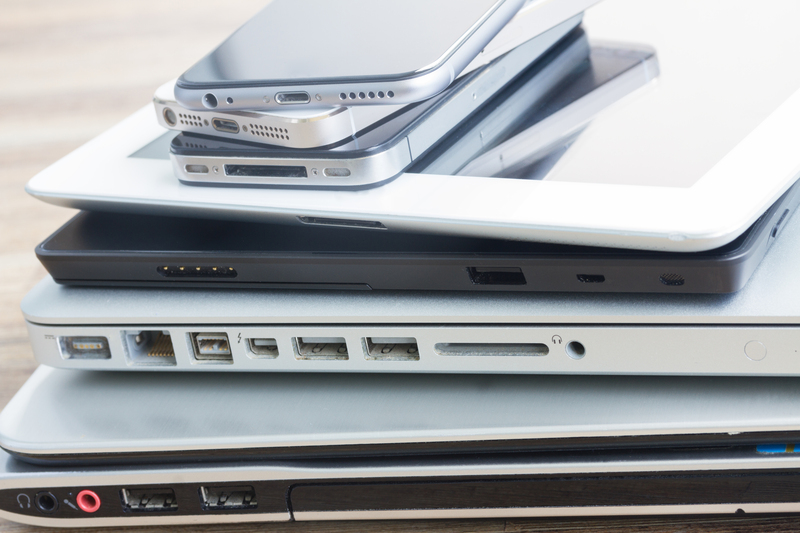Enhance Your Moving Day with Effective Packing Techniques
Posted on 08/06/2025
Enhance Your Moving Day with Effective Packing Techniques
Moving to a new home or office marks an exciting new chapter, but the logistics of relocation can quickly become overwhelming. From fragile keepsakes to bulky furniture, smart and effective packing techniques not only protect your belongings but also decrease stress and streamline the entire process. In this comprehensive guide, you'll discover actionable tips and expert advice on how to enhance your moving day by mastering the art of efficient packing.

Why Packing Matters: The Foundation for a Smooth Move
An organized move starts with comprehensive preparation. Proper packing significantly reduces the risk of damaged items, misplaced essentials, and last-minute chaos. Most importantly, effective packing techniques for moving save time and energy, allowing you to settle into your new space faster and with fewer headaches.
- Protection: Careful packing minimizes breakage and loss.
- Efficiency: Well-packed boxes are easier to transport and unload.
- Peace of Mind: Knowing your valuables are safe reduces moving day anxiety.
Early Preparation: The Key to Efficient Packing
Don't leave packing until the last minute. Begin by creating a timeline and checklist. A proactive approach allows you to sort, declutter, and source the right supplies without feeling rushed.
- Declutter First: Go through closets, basements, and shelves to identify items you no longer need. Donate, sell, or recycle to lighten your load.
- Inventory Your Belongings: Document valuables and take photos for insurance purposes.
- Gather Supplies: Secure sturdy boxes, bubble wrap, packing paper, tape, markers, and specialty containers well in advance.
Packing Supplies: Choose Quality for Best Results
When it comes to helpful packing techniques for moving, the right materials make a substantial difference. With so many options available, select high-quality supplies to ensure protection and easy transport.
- Boxes: Use strong, clean, and appropriately sized boxes. Avoid overfilling to prevent breakage.
- Protective Wrap: Bubble wrap and packing paper safeguard fragile items from shocks and scratches.
- Tape: Invest in heavy-duty packing tape to prevent box openings during transit.
- Labels and Markers: Clear labeling facilitates organized unloading and unpacking.
- Specialty Containers: Wardrobe boxes, dish packs, and electronics boxes help for unique items.
Essential Packing Techniques for a Smooth Move
Room-by-Room Packing
Break the process into manageable sections by tackling one room at a time. This approach streamlines both packing and unpacking in your new location.
- Start with Unused Spaces: Pack storage areas, guest rooms, and seldom-used items first.
- Daily Essentials Box: Reserve a clearly marked box or bag for daily must-haves, like toiletries, medications, and chargers.
- Pack by Category: Group similar items together--books with books, kitchenware with other kitchen items.
Layering for Protection
One of the most effective packing techniques for moving day is layering. Start by cushioning the bottom of each box with padding materials, then add heavier items before lighter, more delicate pieces.
- Bottom Cushion: Use crumpled paper or foam peanuts as a base to absorb shocks.
- Heaviest First: Place denser items at the bottom, topping with lighter, fragile objects.
- Extra Padding: Wrap glassware, ceramics, and electronics individually with bubble wrap or clothing.
Utilize Space Wisely
Maximize box space without overloading. Smart packing not only minimizes the number of boxes required but also distributes weight evenly.
- Fill Gaps: Prevent shifting by filling empty spaces with towels, linens, or packing paper.
- Keep Boxes Manageable: Avoid making boxes too heavy--aim for weights under 50 pounds for easy lifting.
- Use Original Packaging: Repack electronics and appliances in their original boxes if possible for added protection.
Label Everything Clearly
A smooth relocation hinges on knowing exactly where everything is. Label every box on multiple sides, noting both its contents and destination room.
- Room & Contents: List the destination room and a brief description of what's inside.
- Fragile Items: Mark "FRAGILE" clearly for delicate boxes and consider color-coded stickers for quick identification.
- Priority Unpack: Mark boxes that contain must-have items for early unpacking at your new place.
Advanced Tips: Professional Packing Strategies
Disassemble Large Furniture
Taking apart large furniture pieces, such as beds, tables, and shelves, can make transport easier and prevent damage. Keep screws, bolts, and small parts in labeled zip bags attached to the furniture or packed in a "parts box."
- Remove Legs and Hardware: Whenever possible, dismantle to save space and avoid scratches.
- Protect with Padding: Wrap parts in blankets or bubble wrap for added cushioning.
- Photograph Assembly: Take quick snapshots of complicated setups to simplify reassembly.
Protect Fragile and Valuable Items
Special care is needed for items like electronics, artwork, and antiques. Use designated boxes, ample padding, and special packing materials to enhance moving day safety.
- Electronics: Detach all cables and store them in labeled bags. Wrap corded items in anti-static bubble wrap.
- Fine Art: Use custom-fit crates or special art boxes lined with acid-free paper and foam.
- Jewelry and Valuables: Carry small valuables personally or use a safe deposit service to ensure security during the move.
Prioritize Heavy-Duty Tape and Strapping
Investing in extra-durable packing tape keeps boxes sealed and protected from bursts or humidity. For especially heavy boxes or items like books, reinforce bottoms with at least two layers of tape and consider using nylon strapping.
Keep an Inventory Sheet
Keeping a master inventory of everything packed not only helps you keep track of your possessions but is also invaluable in the case of damage or loss. Digital spreadsheets or moving apps can streamline this process.
Packing Hacks: Time-Saving and Space-Saving Techniques
Clothing and Linens
- Wardrobe Boxes: Transfer clothes directly from closet to wardrobe box on the hanger for easy unpacking.
- Suitcases and Drawers: Pack linens, towels, and clothes in suitcases and leave lighter items (if safe) in dresser drawers, wrapping the entire dresser in plastic wrap for secure transit.
- Vacuum Bags: Compress bulky bedding and off-season clothing to save space.
Kitchen & Pantry
- Dish Pack Boxes: Use dish-specific boxes with cell dividers for plates and glasses, wrapping each piece individually.
- Seal Food Containers: Pack sealed, non-perishable items and avoid moving open liquids or perishables.
- Small Appliances: Remove detachable parts, wrap separately, and clearly mark boxes.
Books and Documents
- Small Boxes: Pack books in smaller boxes to reduce weight and prevent lifting injuries.
- Organize Papers: Transport important documents in a watertight, clearly labeled box you keep with you.
Common Packing Mistakes to Avoid on Moving Day
- Overloading Boxes: Heavy boxes are harder to move and more likely to break. Stick to the 50-pound rule.
- Ignoring Labeling: Skip the guesswork--clearly label every box before sealing.
- Insufficient Padding: Fragile items should be thoroughly wrapped and cushioned, never packed loose in a box.
- Packing Hazardous Items: Do not pack items like aerosols, paints, or flammable liquids with other household goods.
Moving Day Action Plan
With everything packed, moving day should unfold smoothly. Here's what to keep in mind to enhance your moving experience using your newly mastered packing techniques:
- Essentials Box: Load this last and unload it first at your new place.
- Supervise Fragile Loads: Instruct movers about boxes marked "Fragile" to ensure careful handling.
- Check Inventory: As each box enters the truck (or your new home), tick it off your list.
- Keep Valuables Close: Transport important documents, jewelry, and personal electronics yourself whenever possible.

Enhance Your Moving Day: Lasting Benefits of Proper Packing
Mastering effective packing techniques offers long-term benefits long after moving day concludes. Unpacking becomes faster, broken or lost item rates drop dramatically, and your peace of mind increases with each carefully labeled box.
Final thoughts: Investing time in learning and applying smart packing strategies pays off on moving day and beyond. Whether relocating across town or across the country, the right packing methods make your new beginning smoother and more enjoyable.
Conclusion: The Art of Stress-Free Moving
An organized move doesn't have to be a dream. By embracing these packing techniques for moving, you'll enjoy a safer, simpler, and more satisfying transition. Remember, preparation, protection, and a methodical approach to packing are your keys to enhancing the moving day experience. Here's to new beginnings--made easier by your expert grasp of packing!



